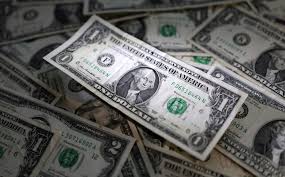
The U.S. dollar has staged an unexpected recovery over the past month, rebounding sharply against major currencies after a prolonged period of weakness. Yet beneath the surface, this strength appears increasingly fragile. The recent appreciation of the greenback is less about economic momentum and more a reflection of short-term positioning and turmoil in rival economies. As investors unwind bearish bets and respond to temporary dislocations, the structural challenges facing the dollar—ranging from fiscal imbalances to weakening growth dynamics—remain unresolved.
Market analysts note that the dollar’s recent rise of around 3% against a basket of major currencies stems largely from technical factors. The U.S. government shutdown disrupted key economic data releases, while political shifts in Europe and Asia pushed investors toward the perceived safety of the dollar. These movements, however, were reactive rather than reflective of renewed confidence in U.S. fundamentals. In essence, the dollar has benefited from its rivals’ instability more than its own resilience.
The yen and the euro both suffered under domestic strains—Japan’s leadership transition and France’s political disorder dampened investor sentiment. Yet these are not enduring structural crises. As such, their effects on the currency markets are likely to fade as political environments stabilize. Once these external pressures ease, the dollar’s rebound may quickly lose steam, exposing the underlying economic vulnerabilities that persist within the United States itself.
Positioning and Sentiment Shifts Drive the Dollar’s Short-Term Lift
The latest dollar rally has been shaped by a powerful repositioning in investor behavior. Over the past quarter, speculative traders who had built large short positions on the greenback have rushed to cover them, reversing earlier pessimism. This kind of mechanical correction often generates a sharp but temporary upward surge. Currency futures data and risk-reversal indicators in options markets show that sentiment toward the dollar turned markedly positive in recent weeks, even as the underlying macro picture remained largely unchanged.
This shift in sentiment has created the illusion of renewed strength. As investors adjusted to the absence of fresh U.S. data during the government shutdown, the vacuum of information encouraged a defensive stance toward risk assets, temporarily boosting the dollar. However, such sentiment-driven rallies rarely translate into sustained uptrends. When the speculative unwind completes and market liquidity normalizes, the currency tends to revert toward its broader trend—in this case, a gradual depreciation driven by declining interest rate differentials and a narrowing growth advantage.
Analysts also point out that the global backdrop remains unsupportive for a prolonged dollar ascent. The Federal Reserve is expected to maintain an easing bias over the medium term, while fiscal policy remains expansionary. Together, these forces weaken the structural appeal of U.S. assets. As a result, the dollar’s short-term resilience could quickly dissipate once market participants refocus on fundamentals rather than positioning dynamics.
Macroeconomic and Policy Headwinds Threaten the Dollar’s Outlook
Beneath the short-term volatility, the dollar’s structural foundations are increasingly at risk. The U.S. economy, while still outperforming several advanced peers, is showing signs of fatigue. Leading indicators—from manufacturing surveys to consumer confidence—point to slower momentum heading into next year. As the growth premium that underpinned the dollar’s multi-year strength continues to narrow, its ability to attract capital inflows will weaken.
Monetary policy presents another critical vulnerability. The Federal Reserve’s future path has grown uncertain as investors anticipate potential rate cuts to offset slower growth and elevated debt costs. Any shift toward looser policy would compress U.S. yields and erode the rate advantage that has historically supported the dollar against lower-yielding currencies such as the euro and yen. Even if the Fed delays rate reductions, the mere expectation of a dovish turn could weigh heavily on sentiment.
Fiscal imbalances compound these pressures. The United States is running one of the largest peacetime budget deficits in its history, exceeding 6% of GDP. Persistent borrowing has pushed the national debt to record levels, raising concerns about the sustainability of financing costs. Foreign investors, who play a critical role in funding U.S. deficits, may demand higher returns or diversify toward other assets if confidence in long-term fiscal management falters. This erosion of trust could accelerate capital outflows, placing downward pressure on the dollar’s exchange rate and its status as the world’s primary reserve currency.
Rivals’ Recovery and Global Realignments Could Undermine Dollar Demand
While the dollar currently enjoys support from instability abroad, this advantage is inherently self-limiting. Once rival economies stabilize, the rebalancing of global capital flows could quickly reverse. In Europe, political uncertainty in France and sluggish German growth temporarily weakened the euro. Yet both economies retain deep industrial capacity and policy flexibility. The European Central Bank’s ongoing normalization of monetary policy could gradually restore confidence, narrowing the yield gap between the euro and the dollar.
In Asia, the yen’s weakness following Japan’s leadership changes and expectations of fiscal expansion is likely overextended. The Bank of Japan has already signaled readiness to adjust its ultra-loose stance, which could tighten yields and lend support to the yen in the coming months. Similarly, emerging Asian currencies, long pressured by dollar strength, are finding resilience in improving trade dynamics and stable commodity prices. As the global growth environment steadies, diversification away from the dollar becomes more attractive to institutional investors and sovereign funds.
Moreover, a growing emphasis on regional trade alliances and currency settlements outside the U.S. dollar framework hints at gradual structural change. From the BRICS’ exploration of alternative payment systems to bilateral trade agreements settled in local currencies, global reliance on the dollar is slowly diminishing. While this evolution is incremental, it introduces a secular headwind that could make future rallies less durable. In a world where competitors strengthen and the global economy diversifies, the dollar’s dominance faces subtle yet persistent erosion.
(Source:www.marketscreener.com)
Market analysts note that the dollar’s recent rise of around 3% against a basket of major currencies stems largely from technical factors. The U.S. government shutdown disrupted key economic data releases, while political shifts in Europe and Asia pushed investors toward the perceived safety of the dollar. These movements, however, were reactive rather than reflective of renewed confidence in U.S. fundamentals. In essence, the dollar has benefited from its rivals’ instability more than its own resilience.
The yen and the euro both suffered under domestic strains—Japan’s leadership transition and France’s political disorder dampened investor sentiment. Yet these are not enduring structural crises. As such, their effects on the currency markets are likely to fade as political environments stabilize. Once these external pressures ease, the dollar’s rebound may quickly lose steam, exposing the underlying economic vulnerabilities that persist within the United States itself.
Positioning and Sentiment Shifts Drive the Dollar’s Short-Term Lift
The latest dollar rally has been shaped by a powerful repositioning in investor behavior. Over the past quarter, speculative traders who had built large short positions on the greenback have rushed to cover them, reversing earlier pessimism. This kind of mechanical correction often generates a sharp but temporary upward surge. Currency futures data and risk-reversal indicators in options markets show that sentiment toward the dollar turned markedly positive in recent weeks, even as the underlying macro picture remained largely unchanged.
This shift in sentiment has created the illusion of renewed strength. As investors adjusted to the absence of fresh U.S. data during the government shutdown, the vacuum of information encouraged a defensive stance toward risk assets, temporarily boosting the dollar. However, such sentiment-driven rallies rarely translate into sustained uptrends. When the speculative unwind completes and market liquidity normalizes, the currency tends to revert toward its broader trend—in this case, a gradual depreciation driven by declining interest rate differentials and a narrowing growth advantage.
Analysts also point out that the global backdrop remains unsupportive for a prolonged dollar ascent. The Federal Reserve is expected to maintain an easing bias over the medium term, while fiscal policy remains expansionary. Together, these forces weaken the structural appeal of U.S. assets. As a result, the dollar’s short-term resilience could quickly dissipate once market participants refocus on fundamentals rather than positioning dynamics.
Macroeconomic and Policy Headwinds Threaten the Dollar’s Outlook
Beneath the short-term volatility, the dollar’s structural foundations are increasingly at risk. The U.S. economy, while still outperforming several advanced peers, is showing signs of fatigue. Leading indicators—from manufacturing surveys to consumer confidence—point to slower momentum heading into next year. As the growth premium that underpinned the dollar’s multi-year strength continues to narrow, its ability to attract capital inflows will weaken.
Monetary policy presents another critical vulnerability. The Federal Reserve’s future path has grown uncertain as investors anticipate potential rate cuts to offset slower growth and elevated debt costs. Any shift toward looser policy would compress U.S. yields and erode the rate advantage that has historically supported the dollar against lower-yielding currencies such as the euro and yen. Even if the Fed delays rate reductions, the mere expectation of a dovish turn could weigh heavily on sentiment.
Fiscal imbalances compound these pressures. The United States is running one of the largest peacetime budget deficits in its history, exceeding 6% of GDP. Persistent borrowing has pushed the national debt to record levels, raising concerns about the sustainability of financing costs. Foreign investors, who play a critical role in funding U.S. deficits, may demand higher returns or diversify toward other assets if confidence in long-term fiscal management falters. This erosion of trust could accelerate capital outflows, placing downward pressure on the dollar’s exchange rate and its status as the world’s primary reserve currency.
Rivals’ Recovery and Global Realignments Could Undermine Dollar Demand
While the dollar currently enjoys support from instability abroad, this advantage is inherently self-limiting. Once rival economies stabilize, the rebalancing of global capital flows could quickly reverse. In Europe, political uncertainty in France and sluggish German growth temporarily weakened the euro. Yet both economies retain deep industrial capacity and policy flexibility. The European Central Bank’s ongoing normalization of monetary policy could gradually restore confidence, narrowing the yield gap between the euro and the dollar.
In Asia, the yen’s weakness following Japan’s leadership changes and expectations of fiscal expansion is likely overextended. The Bank of Japan has already signaled readiness to adjust its ultra-loose stance, which could tighten yields and lend support to the yen in the coming months. Similarly, emerging Asian currencies, long pressured by dollar strength, are finding resilience in improving trade dynamics and stable commodity prices. As the global growth environment steadies, diversification away from the dollar becomes more attractive to institutional investors and sovereign funds.
Moreover, a growing emphasis on regional trade alliances and currency settlements outside the U.S. dollar framework hints at gradual structural change. From the BRICS’ exploration of alternative payment systems to bilateral trade agreements settled in local currencies, global reliance on the dollar is slowly diminishing. While this evolution is incremental, it introduces a secular headwind that could make future rallies less durable. In a world where competitors strengthen and the global economy diversifies, the dollar’s dominance faces subtle yet persistent erosion.
(Source:www.marketscreener.com)





